HWLabs Nemesis 140 GTX Radiator Review
Welcome to another Extreme Rigs review. Under the spotlight today we have another 140mm radiator. This time it’s the Nemesis 140 GTX from Hardware Labs. The Nemesis GTX series is touted as the flagship performer of the HWLabs range so we are keen to see how this 140mm version performs in our thermal testing.
HWLabs have been kind enough to supply review samples for all our radiator reviews so far. So a big thank you to the crew at HWLabs for their continued support.
Before we start we would like to say thanks to Noctua for providing the NF-A14 Industrial PPC-2000 IP67 PWM 140mm fans. We use these fans for all our 140mm based radiator thermal performance testing.
What’s in the Box?
The Nemesis 140 GTX review sample arrived in full retail packaging.
On the back of the retail sleeve there is a detailed technical drawing along with a list of features.
Removing the retail sleeve we find a sturdy cardboard box with a factory sealed sticker.
The seal is a reminder to use correct length mounting hardware.
I really like the HWLabs boxing as the compartment is at one end keeps the provided accessories away from the core. It would be nice to see a bubble wrap sleeve over the radiator to protect it. Despite this, the Nemesis 140 GTX has great packaging that should ensure safe arrival to the end user.
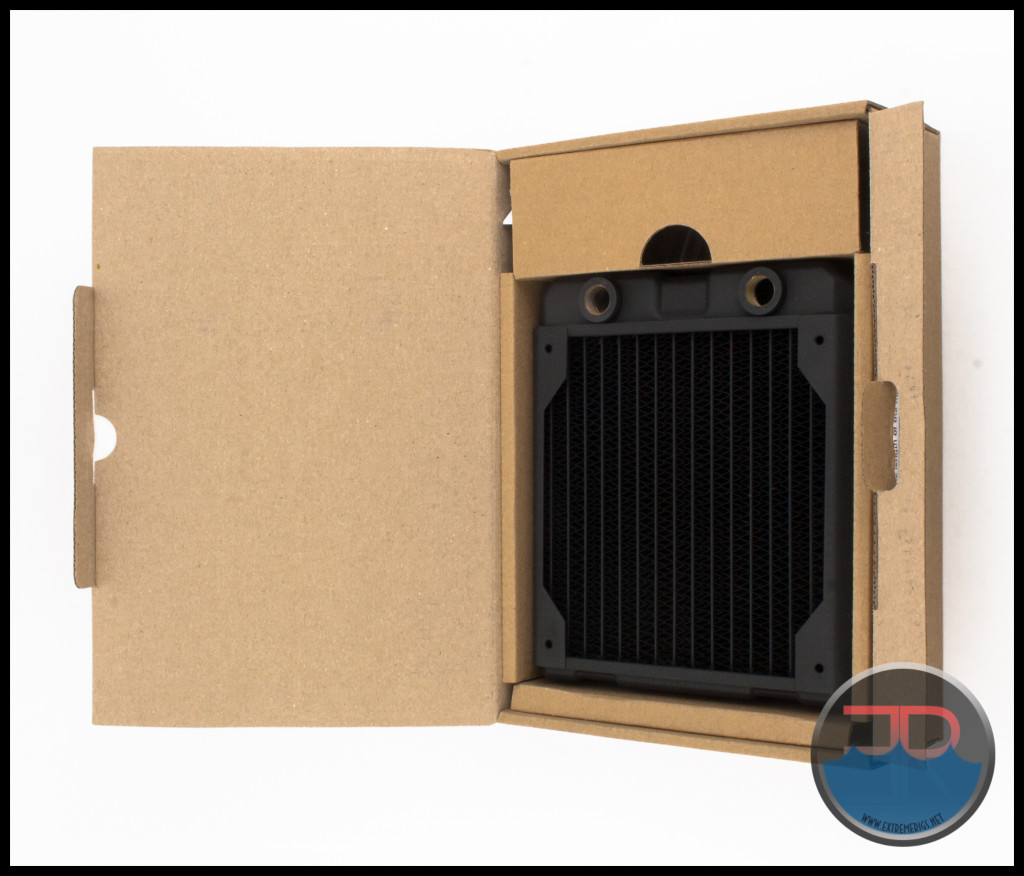
Under the flap on the right hand side, we found 2 bags with the supplied accessories along with mounting instructions specific to the GTX series radiators.
Extent of delivery:
1 x Nemesis 140GTX Radiator
4 x M4 x 28mm screws.
4 x M4 x 5mm screws.
1 x Nemesis GTX Installation instructions.
In previous reviews of GTX series radiators we coined a term “Opti-Flow” for obtaining maximum performance of the dual pass core by using the correct ports depending on air-flow direction. HWLabs now include a leaflet detailing how to “maximize” performance. We’ll detail more about this in the specifications.
There are four short and four long screws. These enable mounting a single fan to one side of the radiator using the 28mm screws. The 5mm short screws enable mounting of the radiator directly to the chassis. This means the radiator can be mounted either as an intake with the fan pulling, or exhaust with the fan pushing. In other words the supplied 28mm screws are not long enough to mount a fan between the case and radiator.
If you intend to run a fan between the case and radiator you will almost certainly need to provide your own M4 screws of suitable length. M4 x 30mm (course thread) should do the trick in most situations if you are using 25mm thick fans.
Onwards to technical specifications!








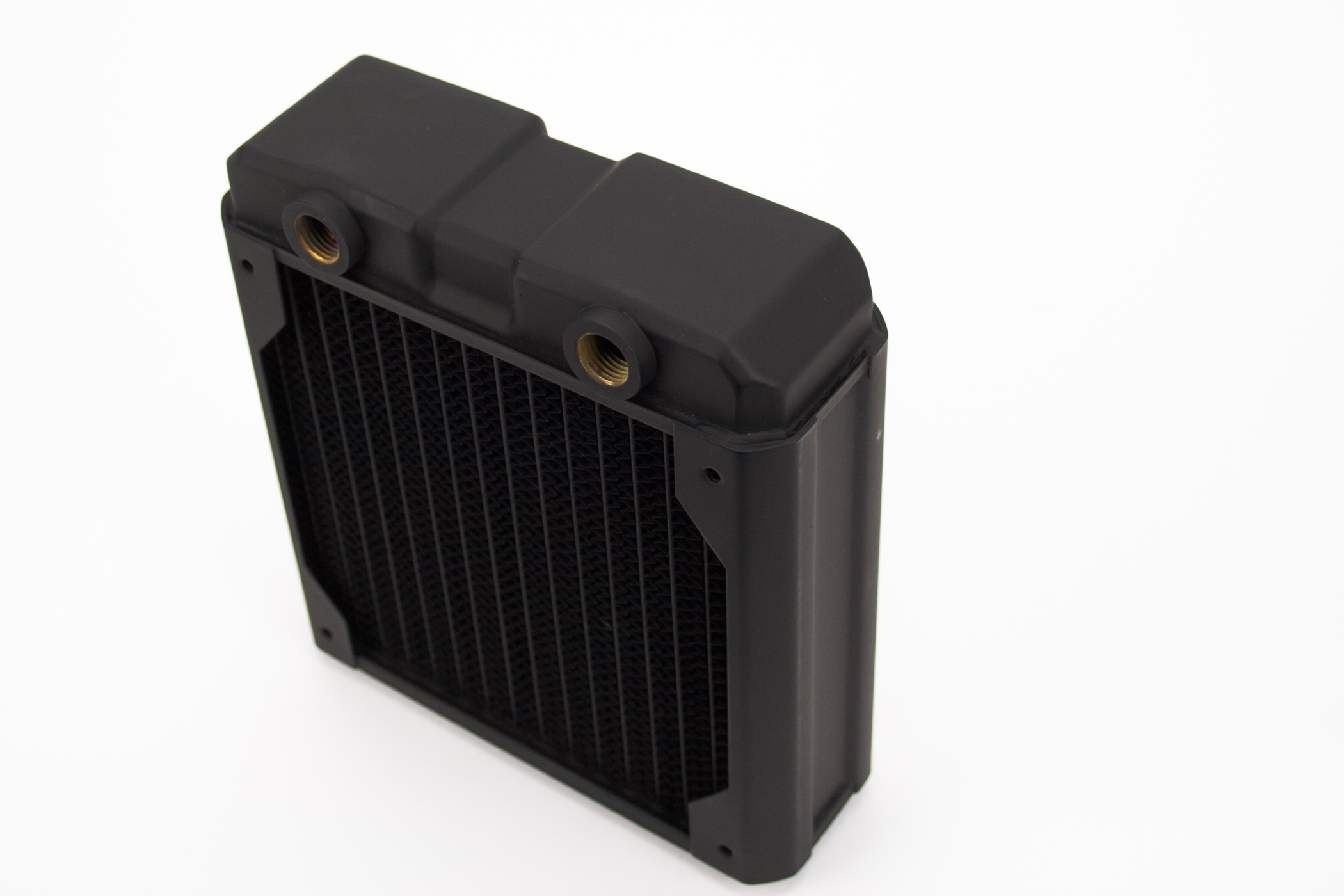

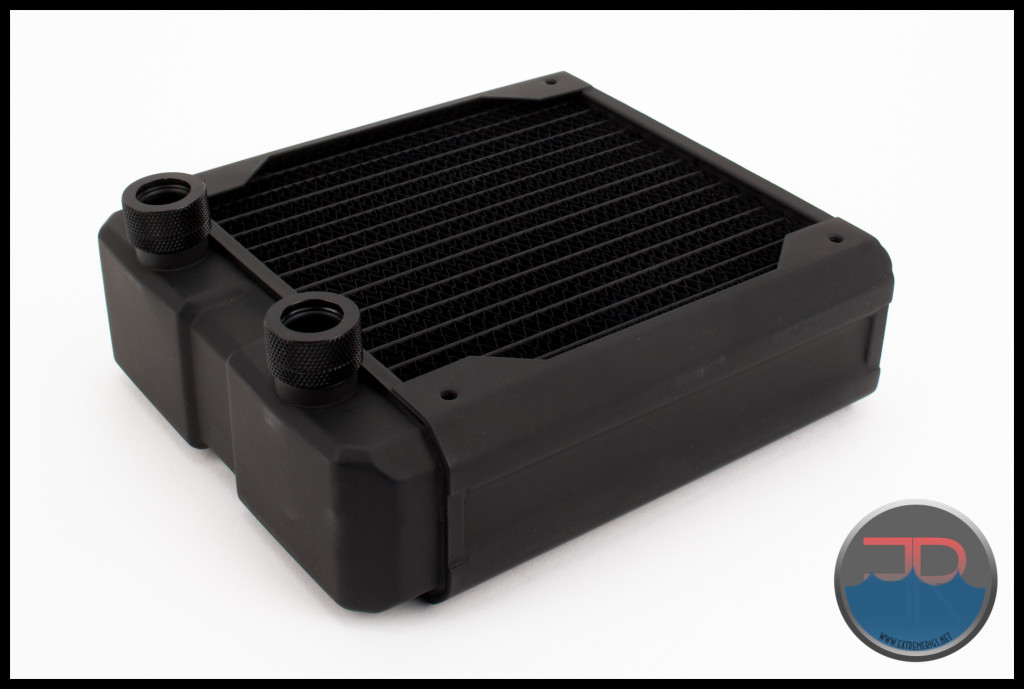

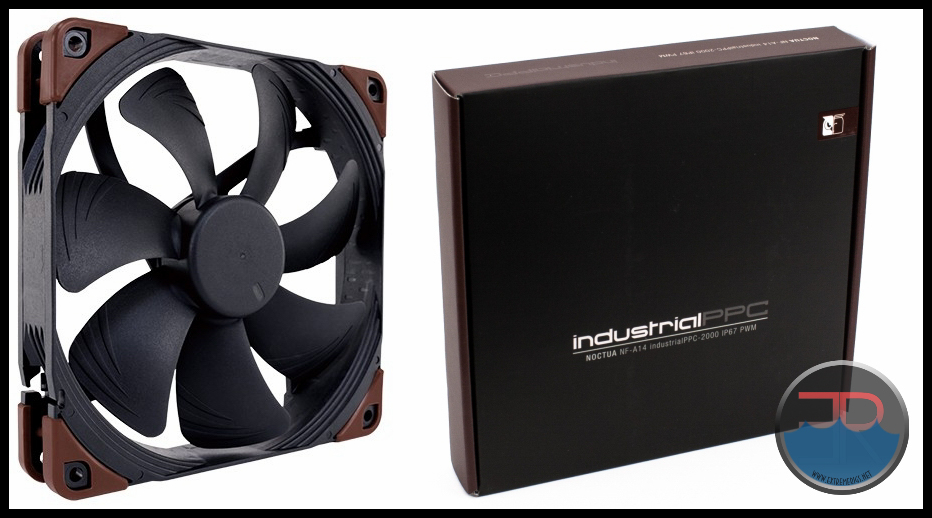
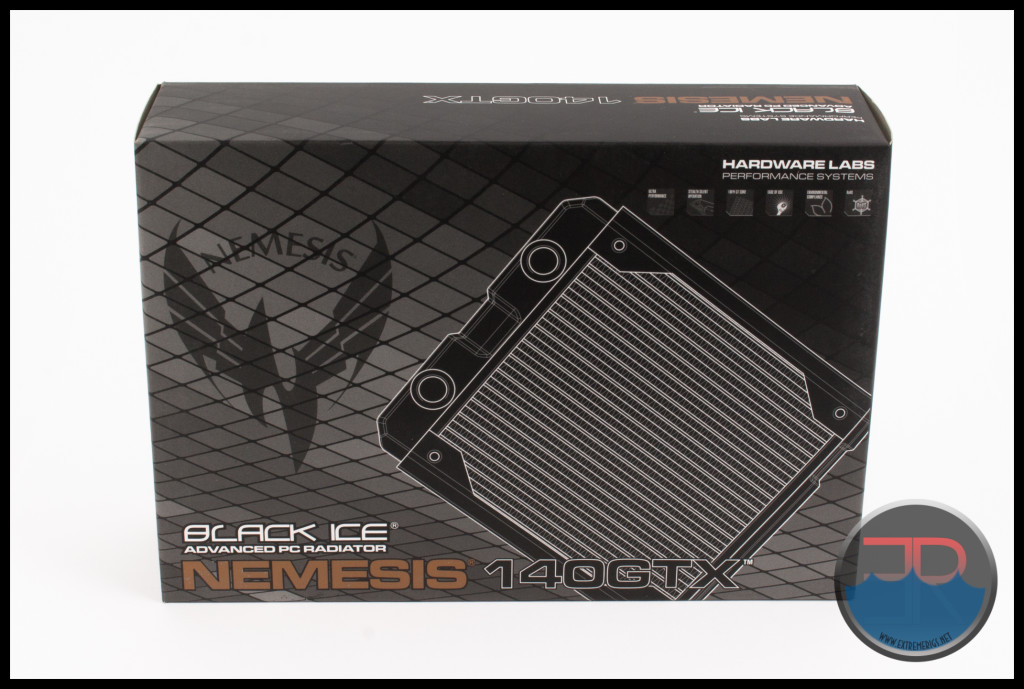
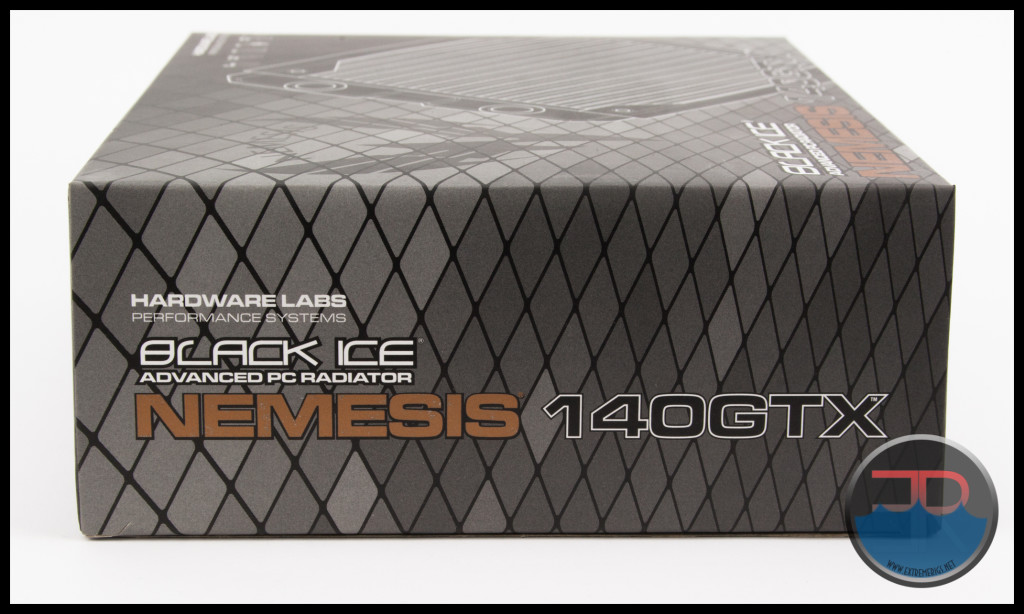
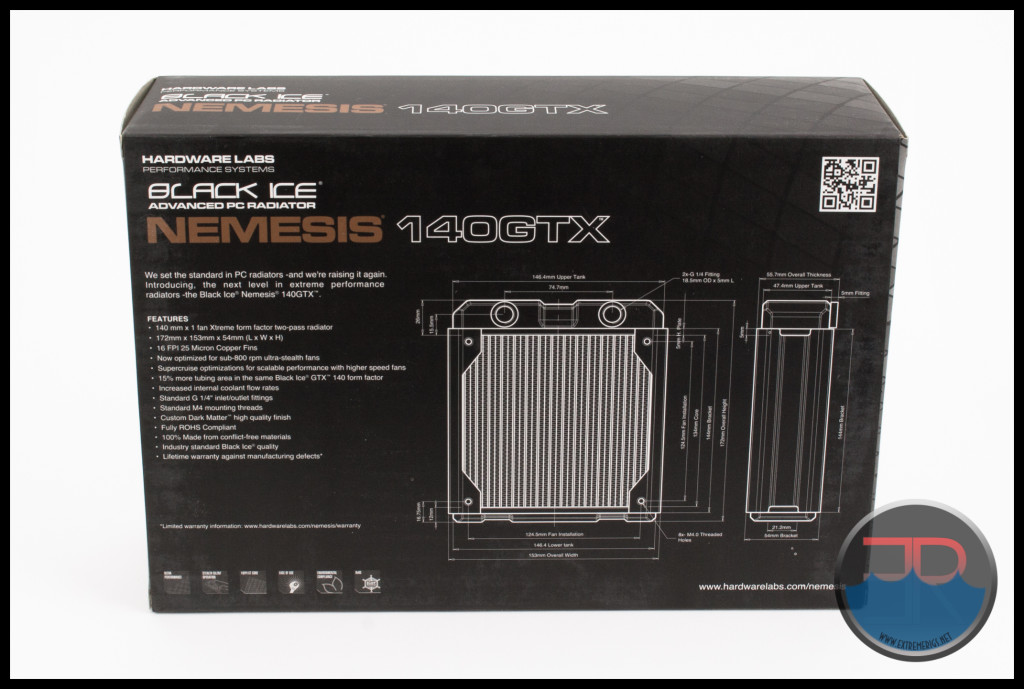
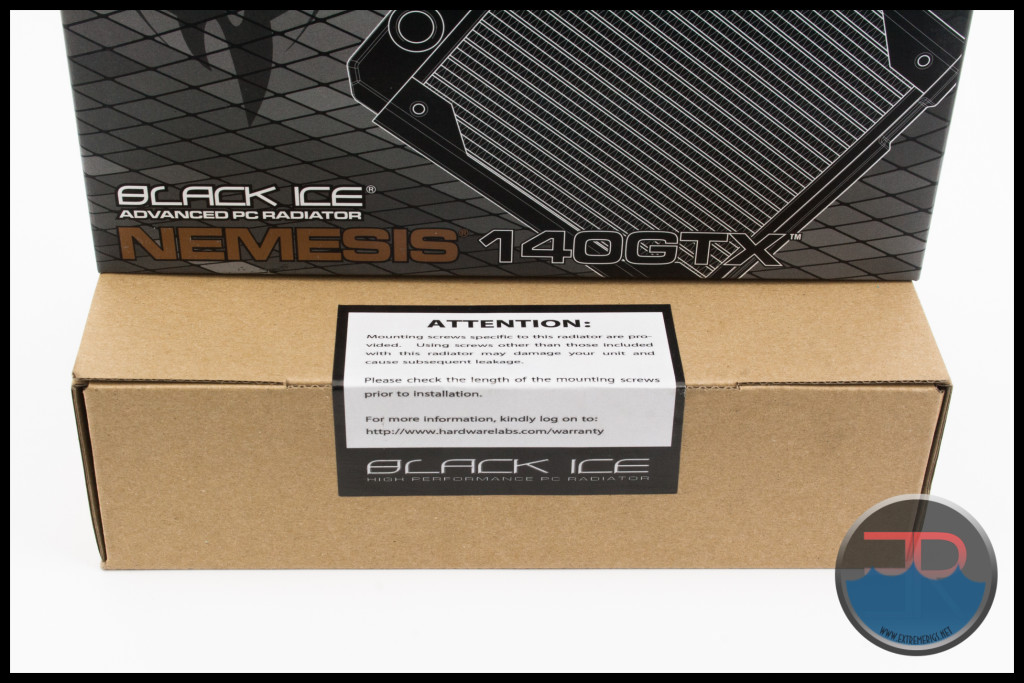
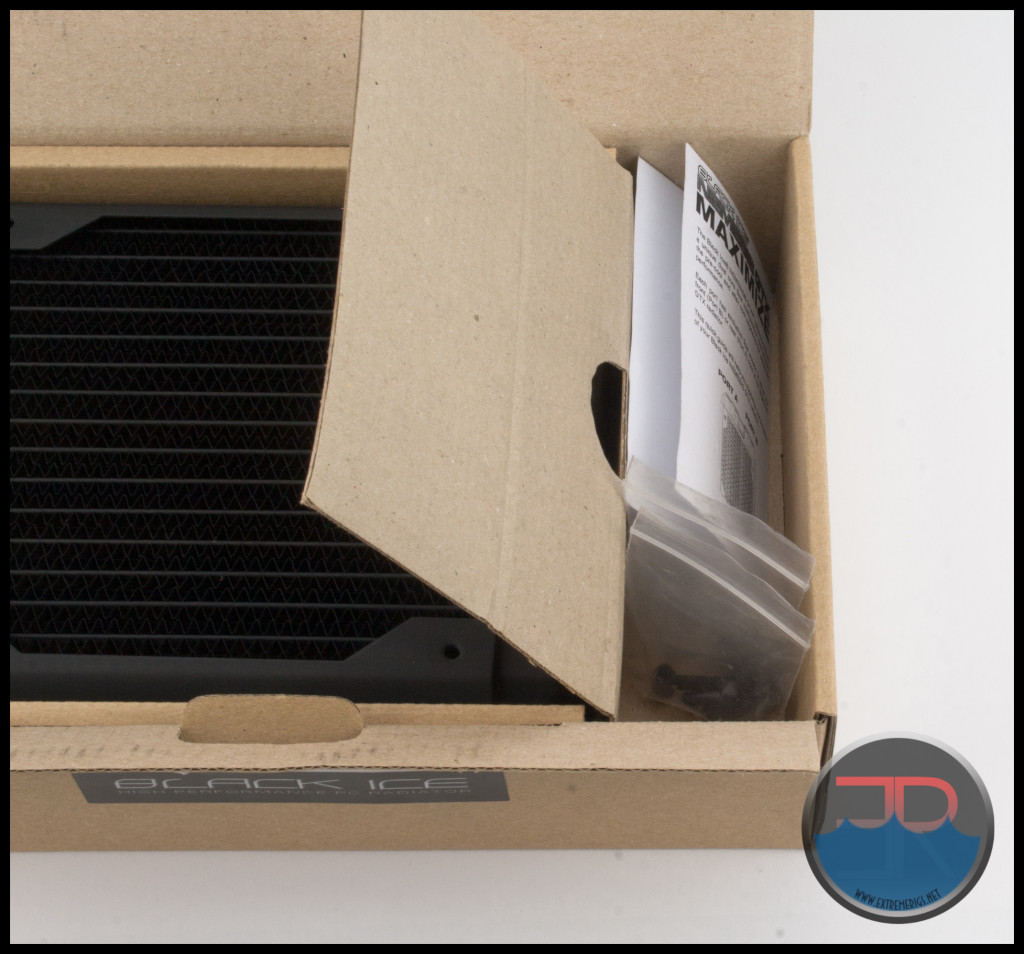
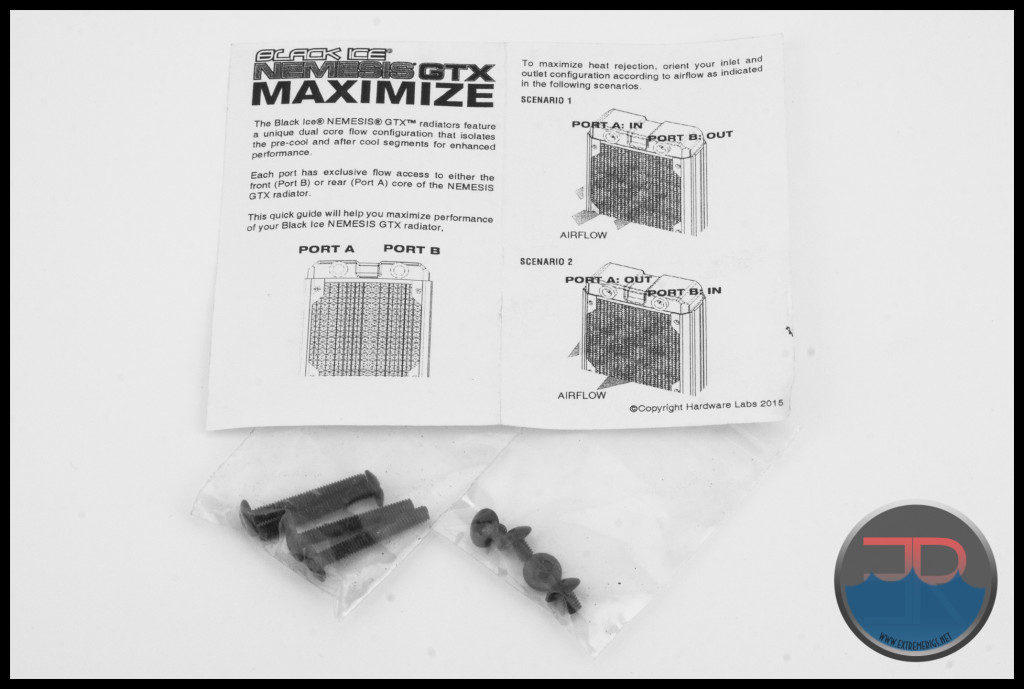
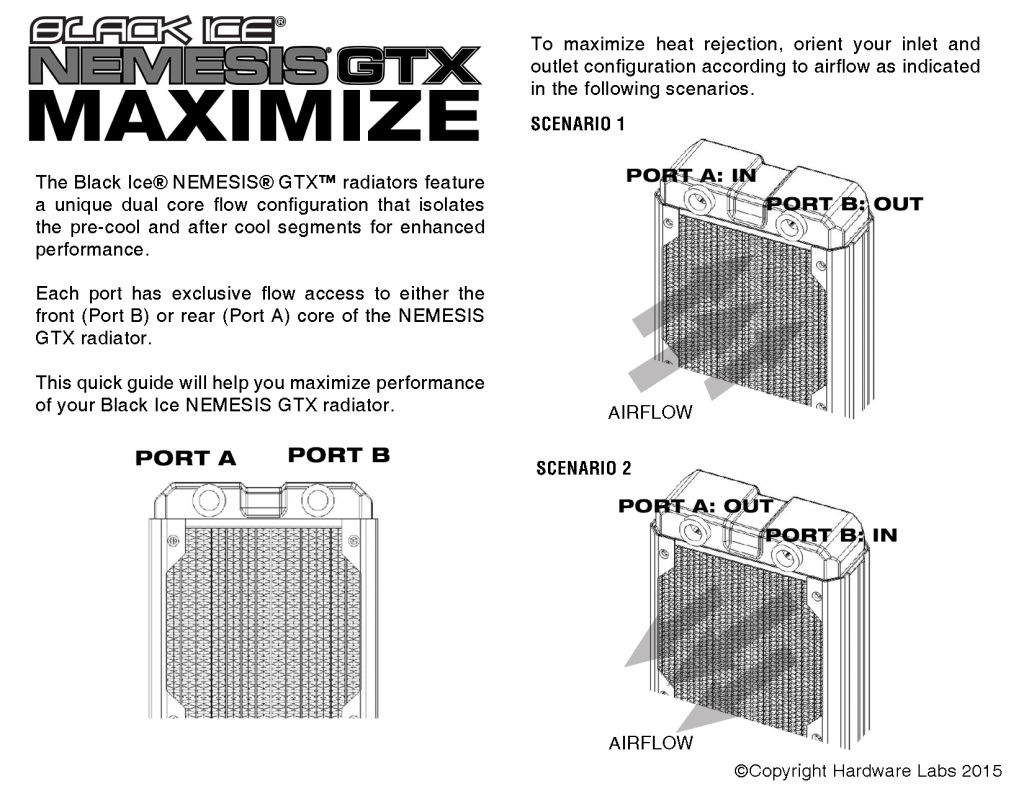
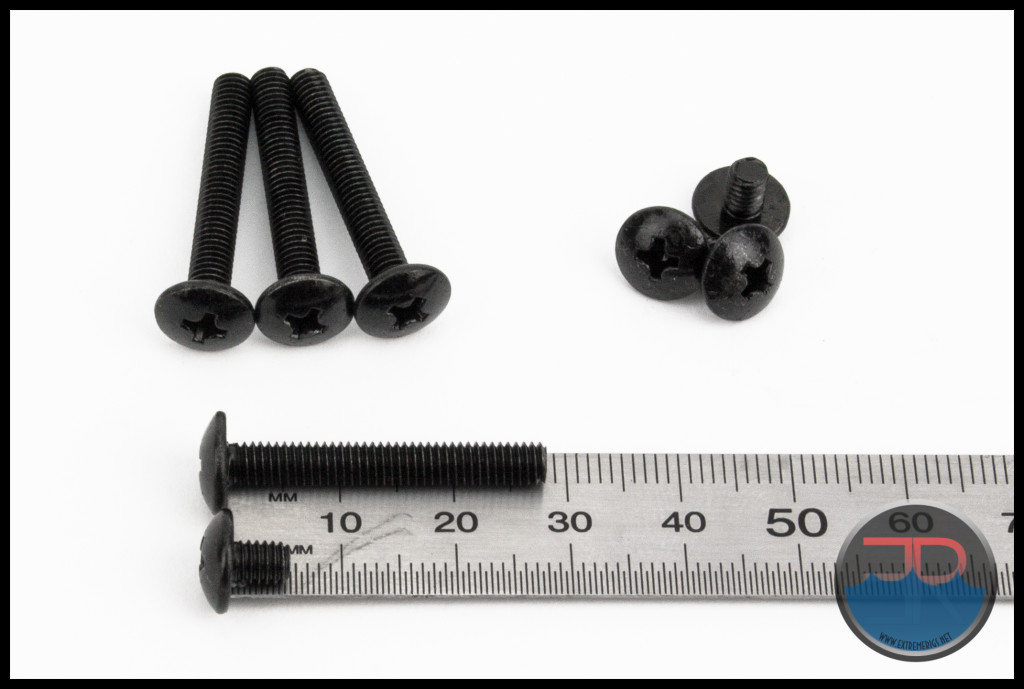
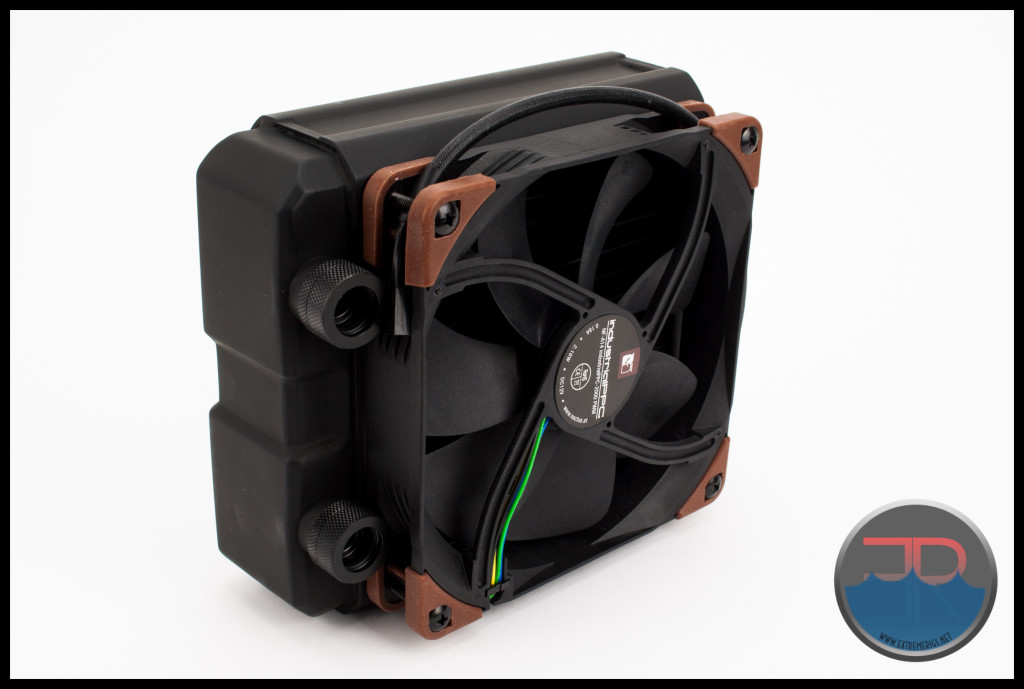



I really wish the 500rpm fan speed was tested with radiators on this site for lower noise builds. I’m trying to decide between a HWlabs GTX 140 and EK CE 140, and this extra data could push me off the fence either way.
In curious as to whether the GTXs performance would fall behind the CE in push pull at these fan speeds, since in the single fan configuration is is at the bottom of the 750rpm range.
The extrapolated plot makes it seems like the GTX would still beat the CE in push/pull: https://www.xtremerigs.net/wp-content/uploads/2015/11/140-W10DTPPvs.png
Sadly we can’t test every data point, to get this quality of data takes about a month per radiator so adding more data points just kills us!
Comments are closed.